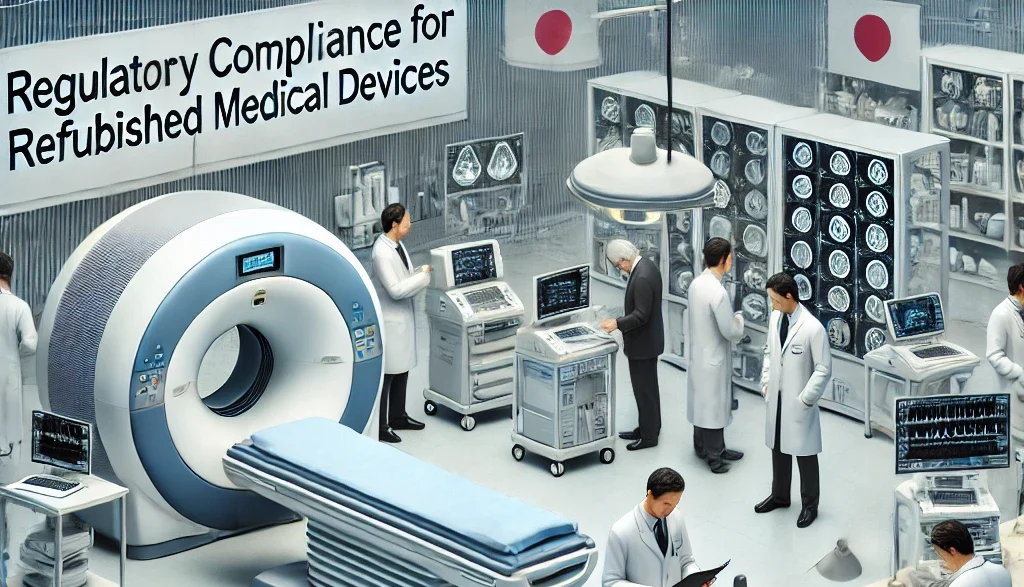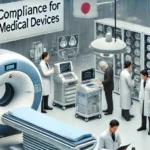

Regulatory Compliance for Refurbished Medical Devices
Refurbished medical devices have surged in popularity as a cost-effective and sustainable alternative to brand-new equipment, offering healthcare providers access to high-quality tools at a fraction of the cost. From refurbished surgical instruments to imaging systems, these devices promise performance and reliability—provided they meet stringent regulatory standards. However, ensuring compliance with local and international regulations is a complex process that demands diligence from refurbishers, suppliers, and end-users alike. This article explores the regulatory landscape for refurbished medical devices, the key standards governing their use, the challenges involved, and best practices to ensure safety and legality in healthcare settings worldwide.
The Importance of Regulatory Compliance
Medical devices—whether new or refurbished—are critical tools in patient care, where precision, safety, and efficacy are non-negotiable. Regulatory compliance ensures that refurbished devices meet the same performance and safety benchmarks as their new counterparts, protecting patients, clinicians, and healthcare institutions from risks like equipment failure, contamination, or inaccurate diagnostics. Non-compliance can lead to severe consequences, including legal penalties, financial losses, and harm to patients, making adherence to regulations a top priority.
Unlike new devices, which are regulated straight from the manufacturer, refurbished devices involve additional layers of oversight. They must be restored to a condition that satisfies original design specifications while complying with current standards—a process that varies by country and region. Understanding these regulations is essential for refurbishers to maintain credibility and for healthcare providers to make informed purchasing decisions.
Key Regulatory Frameworks Worldwide
The regulatory landscape for refurbished medical devices differs globally, reflecting diverse healthcare priorities, economic conditions, and legal systems. Below are some of the most prominent frameworks:
-
- United States: FDA Oversight
In the U.S., the Food and Drug Administration (FDA) classifies refurbished medical devices as “reprocessed” or “remarketed” devices under the Federal Food, Drug, and Cosmetic Act. Refurbishers are considered manufacturers and must register with the FDA, adhering to Quality System Regulation (QSR) standards (21 CFR Part 820). This includes requirements for design control, testing, labeling, and adverse event reporting. For high-risk devices (e.g., pacemakers or ventilators), a 510(k) premarket notification may be required to demonstrate equivalence to the original device. The FDA also mandates strict sterilization and validation processes to eliminate infection risks.
- United States: FDA Oversight
-
- European Union: MDR Compliance
The EU’s Medical Device Regulation (MDR), effective since May 2021, governs refurbished devices under Regulation (EU) 2017/745. Entities that “fully refurbish” devices—restoring them to original performance levels—are treated as manufacturers, requiring CE marking to signify compliance. This involves a conformity assessment, technical documentation, and adherence to safety and performance requirements. Unlike the U.S., the EU allows refurbished devices to be remarketed under the original CE mark in some cases, provided refurbishment is minimal and documented appropriately. Post-market surveillance and vigilance reporting are also mandatory.
- European Union: MDR Compliance
-
- Japan: PMD Act Standards
Japan regulates refurbished medical devices under the Pharmaceuticals and Medical Devices Act (PMD Act), overseen by the Pharmaceuticals and Medical Devices Agency (PMDA). Refurbishers must obtain marketing authorization and comply with Good Quality Practice (GQP) and Good Vigilance Practice (GVP) standards. Japan’s rigorous approach ensures that refurbished devices meet the same safety and efficacy criteria as new ones, with a focus on traceability and quality control. Given Japan’s reputation for precision, its refurbished devices often set a high bar globally.
- Japan: PMD Act Standards
-
- Other Regions
In countries like India, refurbished devices fall under the Medical Device Rules, 2017, requiring import licenses and compliance with ISO 13485 standards. Developing nations may have less stringent regulations, often adopting frameworks like the WHO’s guidelines for medical device donations, which emphasize functionality and safety. Harmonization efforts, such as those by the International Medical Device Regulators Forum (IMDRF), aim to standardize requirements globally, but variations persist.
- Other Regions
Challenges in Ensuring Compliance
Navigating regulatory compliance for refurbished medical devices presents several challenges:
-
- Diverse Standards: Differing regulations across regions complicate global trade. A device compliant in the EU may not meet FDA requirements, requiring refurbishers to tailor processes for each market.
-
- Documentation Gaps: Refurbishers must provide detailed records of a device’s history, refurbishment process, and testing—information that may be incomplete for older or surplus equipment.
-
- Risk Classification: Determining whether a refurbished device retains its original risk class (e.g., Class II vs. Class III) can be contentious, affecting the level of scrutiny required.
-
- Sterilization and Safety: Ensuring devices are free of contaminants or defects demands advanced techniques, especially for complex systems like endoscopes or ventilators.
-
- Perception and Trust: Regulatory compliance alone may not overcome skepticism from healthcare providers wary of “used” equipment, necessitating transparency and certification.
The Refurbishment Process and Compliance
To meet regulatory standards, refurbishers follow a structured process:
-
- Sourcing: Devices are acquired from credible sources, such as hospitals or manufacturers, with documented histories where possible.
-
- Assessment: Each device is inspected for wear, damage, or obsolescence, ensuring it can be restored to original specifications.
-
- Restoration: Worn parts are repaired or replaced using OEM components, and software is updated if applicable.
-
- Sterilization: Devices undergo rigorous cleaning and sterilization to eliminate biological hazards, adhering to standards like ISO 17664.
-
- Testing: Performance, safety, and accuracy are verified through calibration and validation, often exceeding original factory tests.
-
- Certification and Labeling: Compliance is documented, and devices are labeled with refurbishment details, serial numbers, and regulatory approvals.
In regions like Japan or the EU, this process is underpinned by ISO 13485, a globally recognized quality management standard for medical devices, ensuring consistency and traceability.
Best Practices for Healthcare Providers
Healthcare facilities purchasing refurbished devices must take proactive steps to ensure compliance:
-
- Vet Suppliers: Choose refurbishers with certifications (e.g., ISO 13485, FDA registration) and a proven track record. Reputable firms like Bond Japan or GE Healthcare’s refurbishment division are reliable options.
-
- Verify Documentation: Request refurbishment records, test results, and regulatory certificates to confirm compliance.
-
- Check Local Regulations: Ensure the device meets the importing country’s standards, not just the refurbisher’s home jurisdiction.
-
- Perform In-House Testing: Validate performance and safety upon receipt, especially for critical applications like surgery or diagnostics.
-
- Maintain Records: Document the device’s use and maintenance for regulatory audits or liability purposes.
The Future of Regulatory Compliance
As refurbished medical devices grow in demand—driven by cost pressures and sustainability goals—regulatory frameworks are evolving. The IMDRF and WHO are pushing for harmonized standards to simplify compliance across borders. Emerging technologies, such as AI-driven diagnostics or 3D-printed components, may also prompt updates to existing regulations, requiring refurbishers to adapt. Meanwhile, increased transparency, such as blockchain-based traceability, could enhance trust and streamline verification.
Conclusion
Regulatory compliance for refurbished medical devices is a cornerstone of their safe and effective use in healthcare. While the process is complex, adherence to standards like those of the FDA, EU MDR, or Japan’s PMD Act ensures that these devices deliver reliable performance at a lower cost. For refurbishers, compliance builds credibility; for healthcare providers, it safeguards patient care. By understanding the regulatory landscape and partnering with trusted suppliers, facilities can confidently integrate refurbished devices into their operations, balancing quality, affordability, and legality in an ever-demanding industry.
Add a comment Cancel reply
Comments (0)
Related posts


New vs. Refurbished Medical Devices: Making the Decision

Refurbished Surgical Instruments from Japan: Precision, Quality, and Value

The Unmatched Precision of Japanese Medical Technology
Japan Address
COMFYS JAPAN LLC, R Cube Aoyama 3rd Floor, 1-3-1 Kita-Aoyama, Minato-ku, Tokyo 107-0061,Japan
Africa Address
Comfys International Limited KP Offices, Suite 26 Milimani, Nairobi, KENYA




